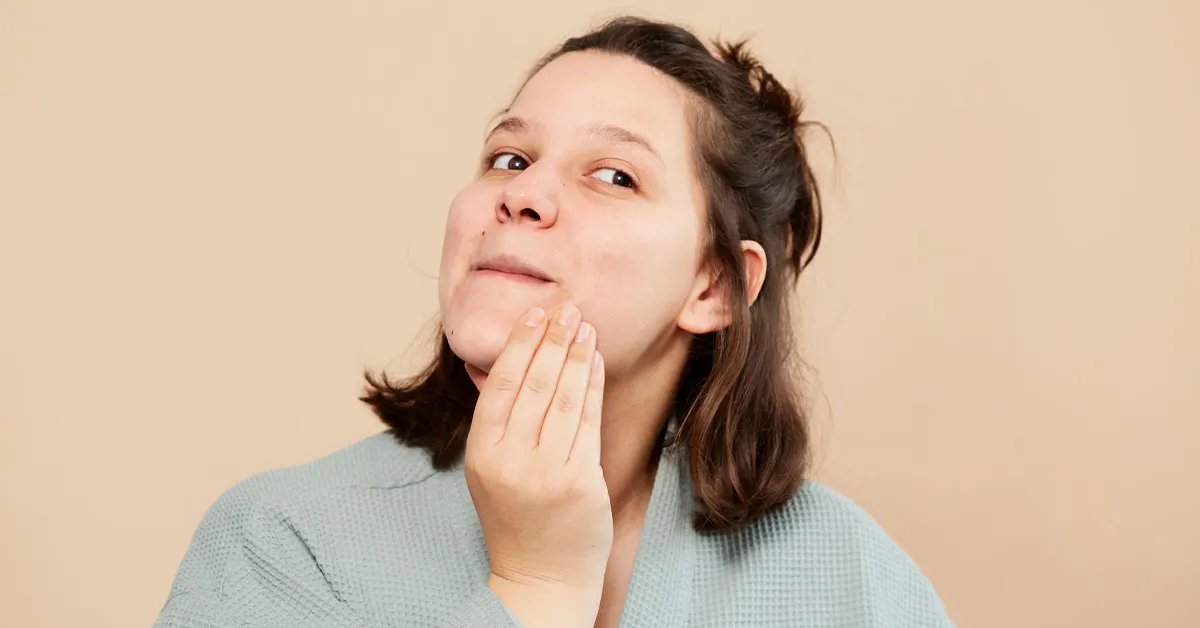
Menstruation is mostly associated with cramps, aches and mood swings; acne flare-ups can cause irritation or impatient.
Acne is a common disease with an underlying physiological hormonal change. Acne flare-up usually seen 7-10 days before the onset of menstrual period and then subside soon after bleeding begins. Premenstrual Syndrome (PMS) is associated with cramps, aches and mood swings as a regular symptom; and premenstrual acne flares up in nearly 50% of women (age group 15 to 50). Premenstrual acne flares experience as a red, painful and pus filled bumps more in acne-prone skin. And also more common in women over 30 years; compare to young.
The average menstrual cycle is 28 days; and during this cycle the body hormones behave differently. During the first half of menstrual cycle, oestrogen is predominant hormone and in second half dominant hormone is progesterone. Both these hormones falls down as menstruation or bleeding begins. Meanwhile, male hormone testosterone, present in small doses constantly throughout the cycle; which means that before bleeding starts and during menstruation, testosterone is relatively higher than female hormones
The shift in hormone levels throughout menstrual cycle will influence skin natural oil production. As due to rise in progesterone levels during second half of menstrual cycle, the sebum or oil production increases; during this time the skin swells up and the pores get compressed; and in acne-prone skin start to get excessively oily skin. But during this phase in dry skin people, the skin glows due to minimised pores and a layer of sebum on the skin.
In addition, higher testosterone levels during bleeding or menstruation further activate the sebaceous glands to produce even more sebum. Due to compression of pores, the sebum gets build up beneath the skin surface, which creates a fertile ground for bacterium P .acnes. These infect the pores leading to inflammation and causes acne flare-ups as red, painful pus filled bumps.
However with time this condition soon disappears as menstruation or bleeding stops and enters in first half of cycle of cycle of increase oestrogen levels, and skin starts to clear up.
If you have an acne-prone skin, to prevent from excessive flare-ups, follow few home remedies:
Use a gel based moisturizer to keep skin hydrated. Do not use a if your skin is oily or greasy.
However, if the flare-ups are out of control, it is best to consult an expert skin professional; will help you out with topical medication or with cosmetic procedure.
